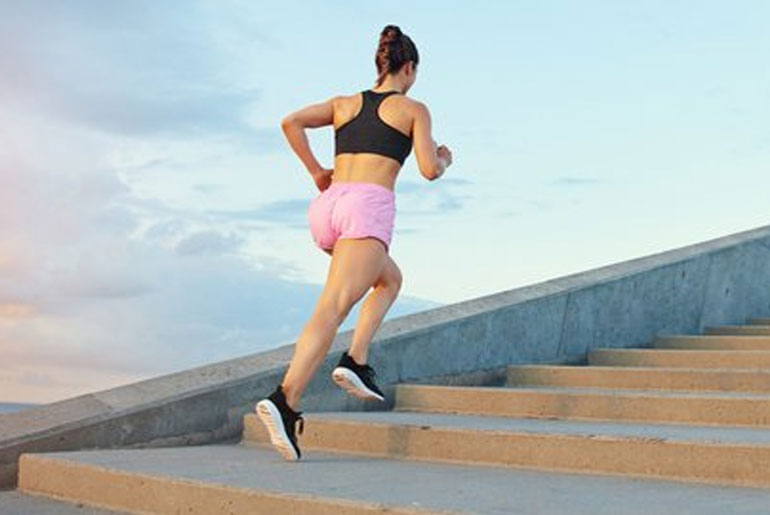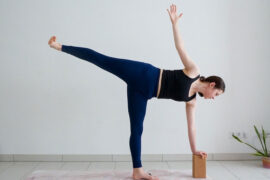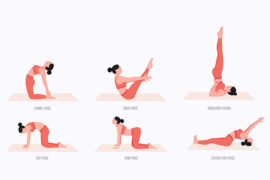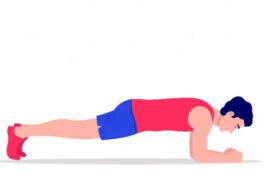In the face of a sedentary lifestyle that often leaves individuals struggling with basic activities like Stair climbing is a simple yet effective cardiovascular and lower-body exercise that offers numerous health benefits., experts emphasize the importance of gradual strength training to enhance overall fitness. Rather than becoming frustrated by physical challenges, the key lies in incorporating simple exercises into daily routines. This approach helps address muscle weakness and lack of stamina, making activities like stair climbing more manageable. Experts stress the significance of starting slowly and progressively increasing the intensity of exercises, such as chair squats, side leg lifts, chair planks, wall sits, and step-ups. By integrating these straightforward exercises into one’s routine, individuals can build strength, improve balance, and overcome the obstacles posed by a sedentary lifestyle, ultimately enhancing their overall physical well-being.
Stair climbing is a simple yet effective cardiovascular and lower-body exercise that offers numerous health benefits. Incorporating stair climbing into your routine can help improve cardiovascular fitness, strengthen leg muscles, and enhance overall endurance. It engages major muscle groups such as the quadriceps, hamstrings, glutes, and calves. Stair climbing also promotes calorie burning and weight management. Whether using stairs at home, work, or a public space, it provides a convenient way to elevate the heart rate and increase oxygen consumption. This form of exercise is particularly beneficial for individuals seeking a time-efficient and accessible workout. Additionally, stair climbing contributes to improved balance and coordination, making it a versatile and practical activity for people of various fitness levels.
Leg Strengthening Exercises:
- Squats: Stand with feet shoulder-width apart, lower your body by bending your knees, and then push back up. This strengthens your quadriceps and glutes.
- Lunges: Take a step forward with one leg, bend both knees, and lower your body down. Alternate legs. This targets your quadriceps and hamstrings.
- Calf Raises: Stand on the edge of a step or a raised surface, and lift your heels, rising onto your toes. This targets your calf muscles.
Cardiovascular Exercises:
- Walking or Brisk Walking: Incorporate regular walking into your routine, gradually increasing the pace to improve cardiovascular fitness.
- Cycling: Riding a bike is a low-impact cardiovascular exercise that strengthens the legs.
- Elliptical Trainer: This machine simulates stair climbing and provides a good cardiovascular workout.
Stair-Specific Exercises:
- Stair Climbing: If possible, practice climbing stairs regularly. Start with a few flights and gradually increase the duration and intensity.
- Step-Ups: Using a sturdy step or platform, step up and down with one foot at a time. This mimics the motion of climbing stairs.
- Side Steps: Stand with one side facing a step, and step up and down sideways. This helps work different muscles.
Core Strengthening Exercises:
- Planks: Strengthening your core can improve your overall stability. Hold a plank position for as long as you can.
- Leg Raises: Lie on your back and lift your legs towards the ceiling, engaging your core muscles.
Balance Exercises:
- Single-Leg Balance: Stand on one leg and hold for 10-30 seconds. Switch legs. This helps improve stability.
Stretching:
- Hamstring Stretch: Regularly stretch your hamstrings to improve flexibility and reduce stiffness.
- Quadriceps Stretch: Stretch your quadriceps by bringing your heel towards your buttocks.
Always start any exercise routine gradually, especially if you’re new to exercising or have any existing health concerns. If you have specific health conditions or concerns, it’s advisable to consult with a healthcare professional or a fitness expert before beginning a new exercise program.
Disclaimer:
The information contained in this article is for educational and informational purposes only and is not intended as a health advice. We would ask you to consult a qualified professional or medical expert to gain additional knowledge before you choose to consume any product or perform any exercise.







